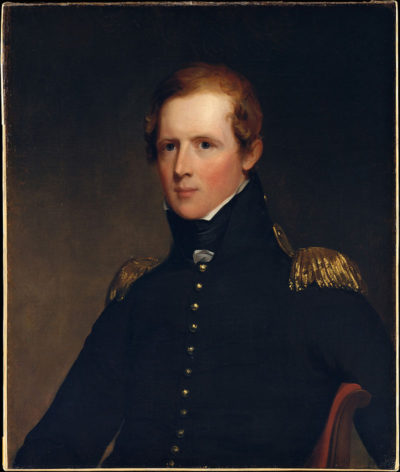John Biddle (John Biddle)

At the outbreak of the War of 1812, John Biddle enlisted in the U.S. Army and was appointed a second lieutenant in the Third Artillery on July 6, 1812 and promoted to first lieutenant March 13, 1813. He was attached to the staff of General Winfield Scott on the Niagara Frontier for most of the war. He became captain in the Forty-second Infantry October 1, 1813, served as assistant inspector general with the rank of major from June 19, 1817 to June 1, 1821, and commanded Fort Shelby in Detroit for some time. After leaving the military, Biddle was appointed paymaster and Indian agent at Green Bay, Wisconsin in 1821 and 1822. He was register of the land at Detroit, Michigan in of Michigan Territory, 1823–1837; commissioner for determining the ancient land claims at Detroit, Mackinaw, Sault Ste. Marie, Green Bay, and Prairie du Chien. John Biddle served as mayor of Detroit in 1827 and 1828. He was elected a Delegate from the Territory of Michigan to the Twenty-first Congress and served from March 4, 1829 until his resignation on February 21, 1831. He was president of the convention that framed the State constitution for Michigan in 1835, even though his Whig Party was in the minority. He ran unsuccessfully as the Whig candidate for election to the United States Senateand later for Governor of Michigan. Biddle was a member of the Michigan State House of Representatives in 1841 and served as speaker, and was a Trustee of the University of Michigan.
John Biddle was president of the Michigan Central Railroad. He also served as the first President of Farmers’ and Mechanics’ Bank, and was a bank Director from 1829 through 1838. He was also active in the civic life of Detroit, being elected Vice President of the Detroit Athenaeum, active in the Association for Promoting Female Education in the City of Detroit, and Vice President (1828–1837) and President (1837) of the Historical Society of Michigan. In 1818, Biddle acquired 1,800 acres (7.3 km2) of land south of Detroit. He constructed a summer estate on the land, completed in 1835. Biddle named his estate “Wyandotte” after the Native American people who had once lived there. Biddle’s home stood where the George P. MacNichol House how sits. Biddle and his family retired to the Wyandotte estate in 1836. However, Biddle was uninterested in farming the estate, and spent much time on his estate near St. Louis, Michigan. In 1853, he sold the Wyandotte estate to Eber Ward of Eureka Iron, who developed the area into the city of Wyandotte, Michigan. Jefferson Avenue, which stretches from New Baltimore, Michigan to East Rockwood, Michigan, is named Biddle Avenue through Wyandotte. After selling the Wyandotte estate, Biddle and his wife returned to Philadelphia, and later the couple spent much time in Paris. In 1859, John Biddle went to White Sulphur Springs in what is now West Virginia, for the summer, and died there. He is interred in Elmwood Cemetery, Detroit, Michigan.
Born
- March, 02, 1792
- USA
- Philadelphia, Pennsylvania
Died
- August, 25, 1859
- USA
- White Sulphur Springs, West Virginia
Cemetery
- Elmwood Cemetery
- Detroit, Michigan
- USA

